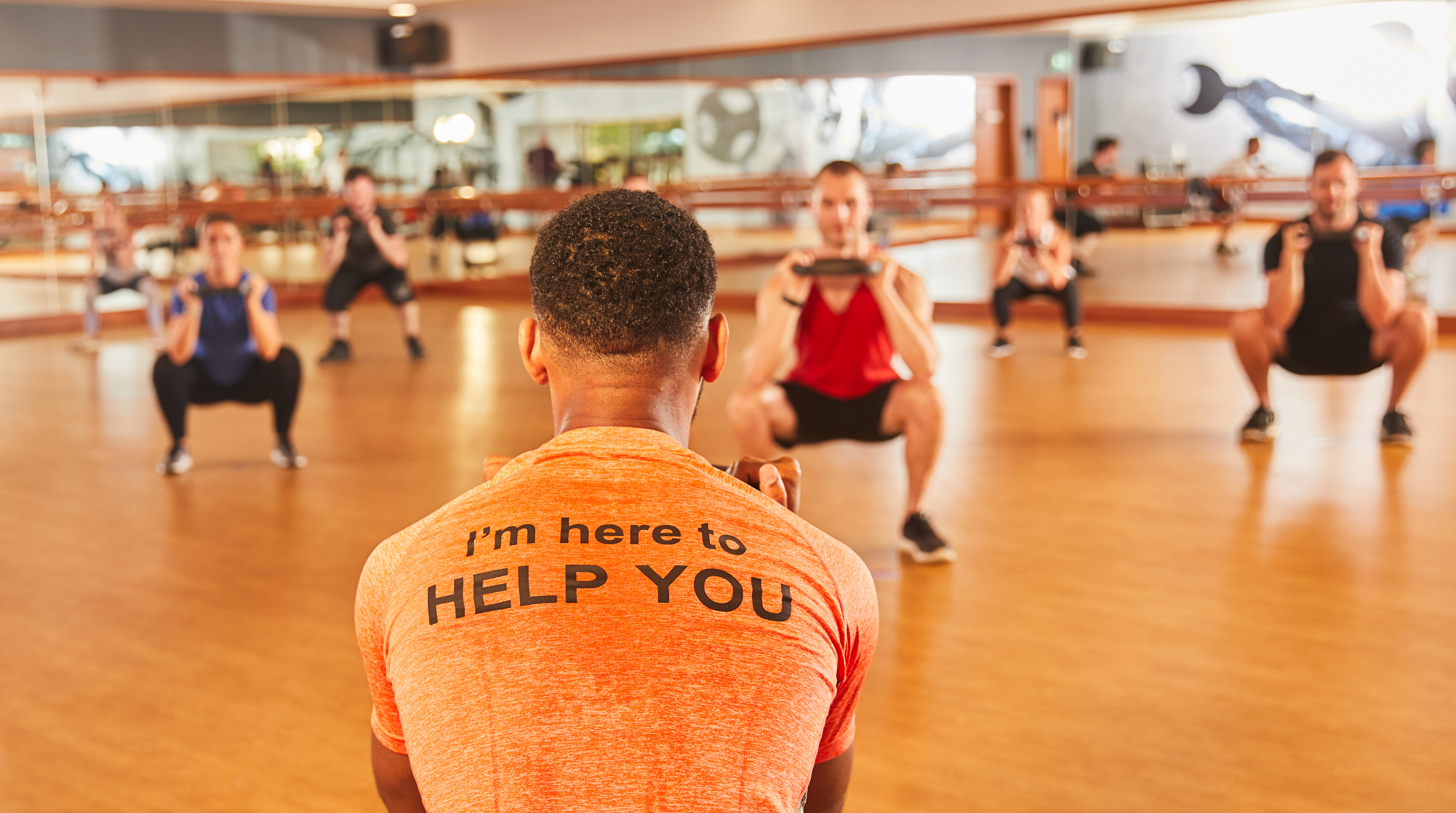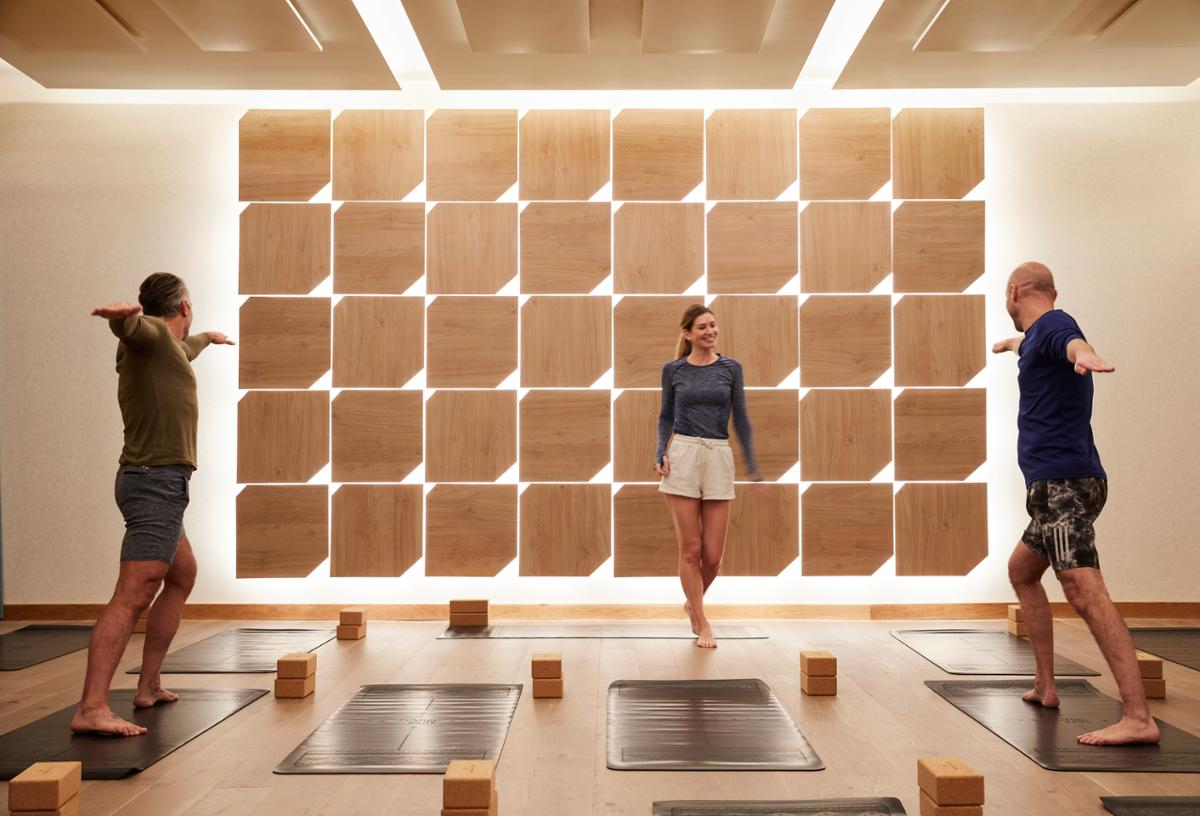latest fit tech news
Egym snaps up Hussle as it moves to dominate the corporate wellness market with its Wellpass product
Everyone's talking about: Leases
Property experts say it’s a golden moment for health and fitness operators to secure leases, as the sector has come through the pandemic with its reputation largely intact and clubs are seen as desirable anchor tenants. Kath Hudson finds out why landlords want to talk

From a real estate perspective, this is a golden opportunity for our sector. Historical competitors for space at ground floor and basement levels – large format retail and casual dining restaurants – are shedding space and office space is also being repurposed. More than ever before, landlords need us to take space, and provide an amenity for the rest of their building or development. The deals just need to be sustainable and the homework needs to have been done on demand and the cost base.
As should be the case, we’re seeing more landlords prioritising environmental criteria to protect their investment. Although this can impose costs at fit-out, it should save operating costs in the long-term.
Landlords are also taking more interest in long-term use of the space: gyms are seen as part of their amenity and they want to know who their tenant will be, as well as whether they can pay the rent.
We’ve come out of a period of rent stability and low inflation – both are changing so both parties need to think carefully about rent review terms. Open market reviews in our sector are challenging because there is often not much comparable evidence, but also index linking can be dangerous when inflation and rent levels are de-linked for a time.
When signing a lease, consider the true cost of getting into the property: the rent, the quality and condition of the building and exact terms of future rent reviews. Also be aware of the options if you need to get out. Hopefully you’ll never need to, but if you do it can drag a whole company down. I’ve certainly learned more in the past about leases by negotiating our way out of them.
It’s time for tenants to push back against service charges! I hate the way this works and how landlords hire third party advisors to spend money – often ineffectively – and get the tenants to write the cheque.

The pandemic has obviously been a challenging period for both landlords and tenants. As landlords were also in difficulty with their own debt repayments there were fraught and complex rent concession negotiations on closed businesses in all markets. As business has slowly returned to normal, we’ve seen the introduction of pandemic clauses in new leases and a tougher, more protracted lease negotiation arena emerge.
On reflection, given the pandemic closures and tough economic conditions, the sector has held up very well, with gym operators emerging from the crisis largely with a positive reputation. There has generally been a resilient response from health and fitness operators, with less CVA/restructuring deals in comparison to other sectors, such as retail and hospitality.
The small box studio-style operators have been the hardest hit, due to factors including expensive town centre locations, the work from home shift and the difficulty of refinancing. This has resulted in large numbers of failures and closures, particularly in central London.
However, in the affordable fitness arena the big players have shown impressive resilience and are still pursuing active expansion programmes, as well as reporting a return to pre-pandemic membership numbers. At the high end, the challenges being faced by Equinox are counterbalanced by the growth of Third Space in London, while David Lloyd is reporting strong trading and a desire to expand further.
The health and fitness sector is showing ‘bouncebackability’, with a number of interesting deals taking place on closed health club and gym sites that are still proving to be an attractive proposition.
In Poole, the YMCA has taken over a former Fitness First club. Hampshire-based trust, Horizon Leisure, has refurbished the former Sports Direct club in Guildford.
Just Fitness (a new health and fitness brand from Bannatyne) is operating the site of the former DW Fitness in Westwood Cross Broadstairs. In Bradford, an Easy Gym site is under offer to a new independent female-only gym.
I believe there’s reason to be positive in both the short and medium term. Gym operators are viewed as possible anchor tenants in mixed use schemes and health and fitness is considered a positive footfall generator. Rents are generally stabilising, investor interest remains strong, the mental health benefits associated with fitness are driving membership numbers and there’s positivity from operators, so the future looks healthy.

• Fixed five-year rent review structure. Normally fixed cap on RPI – say 2/2.5 per cent per annum (pa) increase or cap and collared consumer price index (CPI) or retail price index (RPI) – increases 3 per cent pa and 1 per cent pa. We’re also seeing lower open market value (OMV) or a 2 per cent pa compounding review structure as seen in the retail sector.
• Flexible alienation provisions. Ability to assign/sub-let whole and sub-let part. Sub-let at OMV plus ability to grant up to 25/35 per cent of the whole to licenses/concessions to help future-proofing.
• Service Charges. Tenants in schemes will look to exclude items such as sinking fund and non-repair work that landlords carry out, such as improvements, redevelopment or refurbishment items.
Tenant’s standard shell developer specifications: highlight acoustic requirements and detail what the tenant requires to keep its fit-out capital expenditure costs under control.
• 24-hour trading hours. Many operators push for 24-hour trading ideally, in practice some flexibility will be shown depending on individual site circumstances.
• Monthly rental payments. These assist cashflow
• 15-year lease term with tenant-only break clauses. (usually 10-year break and 6/12 month notice)

The long-term proposition for low-cost fitness is attractive to landlords. The UK has seen many closures in the retail, office and hospitality sectors, so landlords are more focused than ever on securing a strong covenant, giving greater certainty and attractive investment yields.
Gyms can breathe new life into underutilised buildings along local high streets or out of town retail parks, helping landlords and developers create a mixed-use destination which people will travel to, while also increasing average dwell time. Another opportunity we’re seeing is with new residential developments: we’re talking to house builders who are keen to include The Gym Group within the scoping phase of their future mixed-use developments.
We’re witnessing ESG becoming increasingly important for landlords. As the UK’s first carbon neutral gym chain, as well as being AAA MSCI-rated, and with a commitment to a science-based target to achieve net zero by 2045, The Gym Group is using its green credentials to strengthen its proposition as a tenant.
This period is offering great expansion potential, especially in urban residential areas. We’ve just opened our latest site in Uxbridge and will be launching Coventry and Stafford by the end of the year, bringing our total to six new gyms in 2023. Next year we’re ramping up expansion to 10 to 12 launches.


The COVID-19 pandemic has brought about an unexpected shift in the priorities of landlords, who are now compelled to curate more appealing spaces to draw occupants back into offices. This shift, coupled with the contemporary emphasis on wellness, has elevated the desirability of gyms to an unprecedented level.
Health clubs are now ranking alongside artisan coffee shops and esteemed food retailers like M&S Simply Food, in terms of the brands landlords aspire to secure for their developments. With landlords increasingly eager to integrate wellness offerings into their assets, one could argue that this represents a once in a generation opportunity for gym operators.
We’re witnessing a trend of landlords actively educating themselves about the fitness market. While their primary objective remains securing successful tenants who pay the rent, there is now an additional focus on ensuring these tenants have sustainable business plans that will endure for the long term, over the 15-year term of a lease.
Whether it pertains to gyms, restaurants, cinemas, or other leisure operators, landlords are becoming more astute in their due diligence efforts to align with operators possessing viable and relevant business models.
At P-THREE, we represent Third Space, a brand many landlords and developers are keen to incorporate into their projects. However, Third Space are rightfully very selective when it comes to shortlisting suitable locations. Within the property world, the studio format or boutique sector continues to reign supreme in terms of profile, although some recent consolidation has prompted a note of caution.
The studio concept resonates well with landlords because it necessitates smaller sites which can easily transform an old shop or restaurant unit. Moreover, studios do not have complex requirements like pools, which means that, in case of failure, they can be readily repurposed for other operators. Hence, a mid-market chain with a pool may be less enticing to landlords compared to the high-end full service offer, budget chains with a clear plan, or the studio model.
As we transition into a post-COVID world, the importance of a healthy lifestyle has become universally acknowledged. For landlords, the focus is on crafting the ultimate real estate destination: a compelling line-up of ground-floor tenants can translate into higher rental rates for the office space above, where the true value lies. This presents a significant opportunity for fitness, particularly in major cities like London, where the array of gym occupiers is relatively limited.

The majority of landlords and tenants held constructive negotiations during COVID and agreed either rent-free periods or rent deferment during closure periods. Many of these negotiations were specific to individual circumstances, but we did witness a trend of similar agreements.
Since then, some operators have looked to incorporate pandemic clauses into leases, so there is a defined mechanism to address periods of enforced future closures.
Landlords have increasingly turned to health and fitness, competitive socialising and experiential leisure to diversify their tenant mix. Gym use is attractive because it drives footfall, increases dwell time and attracts a wide-ranging demographic. Although there’s significant competition for space, health club operators often take spaces which are not suitable for other uses, as they don’t need prominent frontages and can often occupy upper or lower floors.
Given the commitment of leases, it’s worrying that so many tenants don’t take professional advice before signing agreements. It’s worth paying careful consideration to the timing of rental payments, (monthly or quarterly) service charge and repair obligations, keep open clauses, alienation provisions (the ability to assign or sublet) and importantly the rent review mechanism. Generally, rents are reviewed every five years and many parties agree a cap and collar, so there is a maximum or minimum that the rent can increase.
Since the pandemic there have been a multitude of issues to navigate and a general nervousness around the economy which has dented confidence and stalled some expansion plans. The extremely challenging economic period is causing some consumers to reduce their spending, however the nation is becoming much more health conscious and as we strive to lead a healthier lifestyle, there’s no doubt gyms will retain their popularity. Hopefully a number of the economic issues are stabilising and improved confidence will follow.























































